Glamorous dresses, famous people and camera flashes as one after another, politicians, movie stars, influencers and business people walk down the red carpet. It’s a familiar scene throughout much of the Balkan region, where all manner of annual festivals, from those focused on films to the ever increasing music festivals, have become an established fixture in the cultural calendar.
But while the local media uses bombastic tiles and glitzy coverage to focus the audience’s attention on the sponsors — often portrayed as patrons of art — celebrities, gossip and all-important parties, the art can tend to be somewhat forgotten and left aside.
Maybe the best example is Sarajevo Film Festival, the most important film festival in the region that became an Oscar qualifying festival this year. Every year, selectors bring some of the most important filmmakers to the capital of Bosnia and Herzegovina, but their work is often paid less attention by the media than their red carpet poses.
Throughout the region, new generations, who grow up watching the opening night shows and dreaming of one day being part of it themselves, have little to no chance of reading art critique or finding space to discuss the work produced, and their prospects of a sustainable future as independent artists seem far-fetched.
While the countless festivals may constitute an opportunity to present a wide range of content, bringing together ideas from the region and beyond, and providing space for artists to meet, critics argue that they also tend to consume a significant proportion of state and local cultural budgets, often at the expense of supporting ongoing production by independent actors and artists.
This concept of the “festivalization of culture” is much-discussed among cultural workers in the region, a term describing a phenomenon that goes together with commercialization and industrialization, and leads, some of them believe, to a lack of more serious, responsible and sustainable cultural politics.
Creating space for art
Jeton Neziraj, playwright and head of the Prishtina-based Qendra Multimedia art organization, says that in Kosovo “the festivalization of cultural life” accurately depicts the current way in which culture is approached by the government.
Neziraj claims that every city has one, two or even three festivals — mostly film festivals, but also street art or music festivals. He is very critical when talking about existing festivals, the majority of which he claims are “stupidly, poorly organized and disconnected with the local audience.”
“Most of Kosovo’s cultural life has been reduced to festivals and workshops, while cultural productions have been leveled down to a bare minimum,” Neziraj says, giving the example of his own field of theater. “How can we talk about any quality of theater in Kosovo when in one year only around 20 theater plays have been produced?”
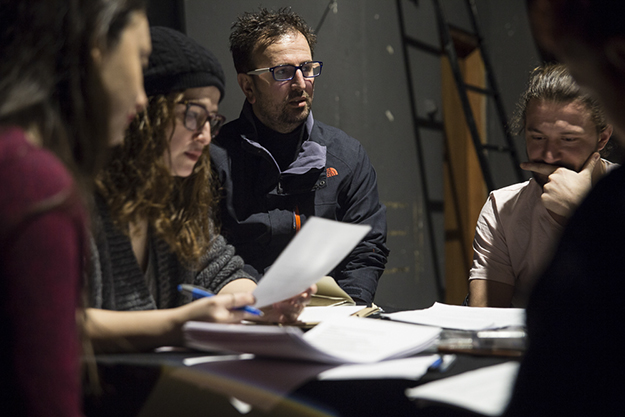
Prishtina-based theater director Jeton Neziraj sees the independent cultural scene in Prishtina as fresh and with the potential to influence despite suffering from a lack of support. Photo: Atdhe Mulla / K2.0.
While money is available for festivals, Neziraj — pointing to the example of his own organization — claims that more subversive art, or groups that depart from the mainstream, are left aside and struggle to survive.
It’s a similar situation over the border in Serbia.
Luka Knežević-Strika, a visual artist and freelance photographer from Belgrade, is one of the members of the Association of the Independent Cultural Scene of Serbia, which advocates for “innovative, critical, and experimental artistic and cultural productions,” while looking for ways to “strengthen capacities of actors of the independent cultural scene.”
Speaking about whether there is space for independent cultural creativity in Serbia and the region, Knežević-Strika says that the cultural politics of neoliberal economies leave little space for acting independently. The capitalist desire to see art claiming its place in the market decreases the space and possibility of independent action, he argues, while the economic need for efficacy and predictability are essentially opposed to creative principles.
“These demands have been dictated by the market of [donor-driven] projects and the logic of predictable one-year projects, where results must be announced ahead,” he says, adding that it is necessary to maintain the possibility of acting “outside this framework.”
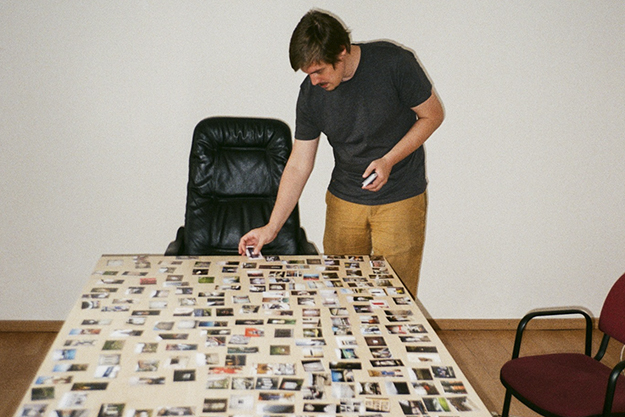
Belgrade-based visual artist Luka Knežević-Strika believes that the cultural politics of neoliberal politics have led to the prioritizing of efficacy and predictability over independent creative principles. Photo: Nemanja Knežević.
As a prerequisite for independent creative projects to take place however, he believes that it is necessary to develop physical spaces where independent artists can work and demonstrate their ideas.
One such space is the Magacin Cultural Center in Belgrade. The center is co-run by a group of artists and cultural workers from different fields who share the space and develop its work through an open calendar model, “an online programmatic platform that ensures equal chances in offering the space to potential users.”
The time slots are distributed in accordance with a communal agreement drawn up between all interested parties that outlines certain conditions that potential projects need to fulfill in order to take place in the center.
The space is provided for use through the open calendar around 500 times a month, to a variety of different parties, Knežević-Strika explains.
“The open calendar model is available to hundreds of users for exhibitions and performances, but more importantly for preparation, production, exercise, attempts and mistakes,” he says.
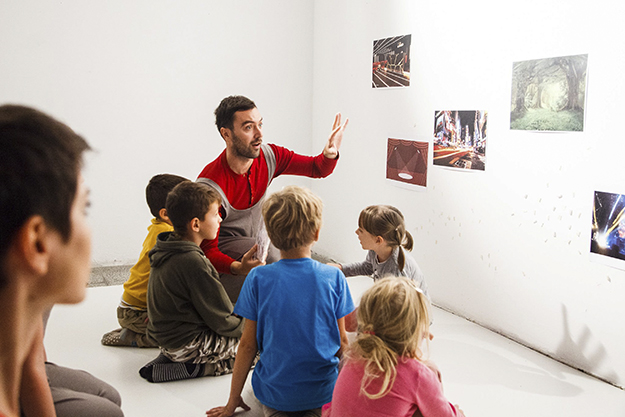
Magacin is a cultural center in Belgrade where many independent artists are finding space to show their work. Photo: Luka Knežević-Strika.
However, he says that the center lacks support and recognition and that the Municipality of Belgrade has never showed any interest in adequately addressing their legal status or supporting the center financially, despite it being one of the most active cultural spaces in the Serbian capital.
In both Serbia and Kosovo, as in other parts of the region, day-to-day cultural life, and particularly independent culture, is instead often kept alive through financial aid from international institutions, organizations and embassies.
Without such an independent cultural scene, Neziraj says that cultural life in Kosovo would be a “true desert.”
“Excluding a few vital public cultural institutions in Kosovo — the National Theatre of Kosovo, the Kosova National Art Gallery and others — the largest part of cultural life in Kosovo actually consists of the independent cultural scene,” he says.
However, he adds that the independent cultural scene, no matter its small size and relative weakness, is still fresh, tough and has the ability to lead to a positive influence on cultural and social life.
Independent, but with no health care
It’s hard to find such optimism for the state of the independent cultural scene in Bosnia and Herzegovina.
Each year, a significant number of cultural festivals are also conducted in Bosnia and Herzegovina. Among the more well known is the Sarajevo Film Festival, while the MESS International Festival is the most famous in terms of theatrical performance in the eyes of the domestic, regional and global cultural audience.
But away from the bigger festivals, cultural production in Bosnia has been struggling for years. As with almost every aspect of life in the country, it is highly politicized and, just like in its neighboring countries, some of the most important positions inside the cultural institutions are given to members of the parties that happen to hold power at any given moment. The often modest public funds that are dedicated to culture also tend to be planned in accordance with the interests of political parties.
In such circumstances, independent artists are often forced to look for funding to support their work from outside of the country, and their work regularly becomes more present in other countries than at home.
Adela Jušić is a contemporary visual artist and member of the Association for Culture and Art (CRVENA, meaning Red) in Sarajevo. Her art is very political and often uses symbols and ideas from the recent past, whether from Yugoslavia or the Bosnian war.
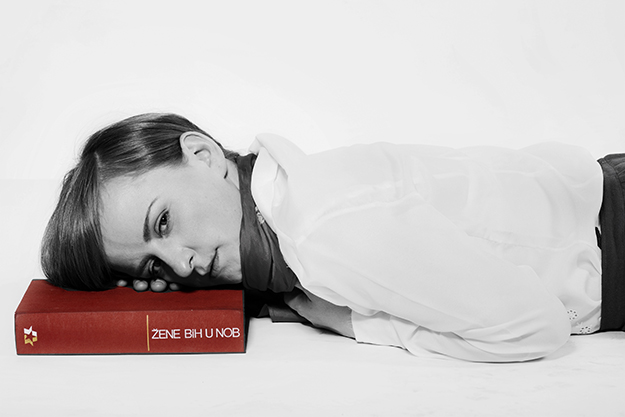
Contemporary visual artist Adela Jušić says that it is hard to make a living as an independent artist in Bosnia and Herzegovina and that festivals are prioritized over supporting the cultural scene more widely. Photo: Almir Zrno.
Outside of Bosnia, Jušić is a prominent artist whose work has received plenty of attention around the world, with exhibitions in New York, London, Bonn and São Paolo. But at home she has little opportunity to exhibit her work or to sell it, earning her income mainly through freelance jobs.
“If we look at culture, that is, in my case, visual art, as a kind of business, then it means that it should provide us with some kind of earnings,” she says.
Despite the funding that pours into the major festivals however, little seems to be done about creating a sustainable infrastructure for challenging and independent production. Jušić insists that as an independent artist it is hard to speak about making a living from art in Bosnia and Herzegovina, let alone to work on independent action and creation.
“There is no art market,” Jušić says, adding that independent cultural creativity is not on the list of priorities of small annual funds. “Those who have become wealthy during the war or those who have recently acquired capital and money are not interested in art, nor in culture.”
Theater and film director Dino Mustafić goes one step further. The Sarajevo-born director has won multiple international awards for his politically engaged work and has long been an outspoken critic of the existing cultural policies in the region.
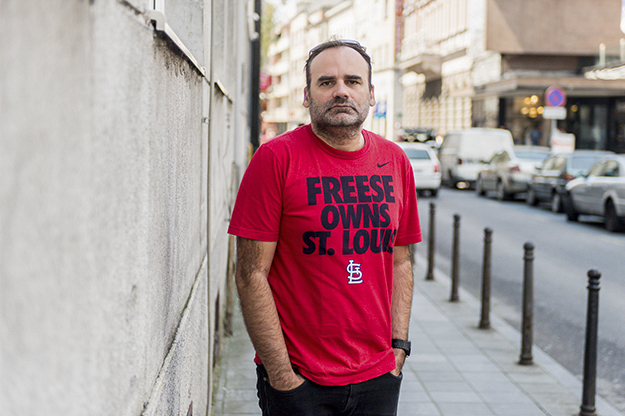
Dino Mustafić says that in the Balkans, as elsewhere, culture suffers from being seen as a left wing hobby. Photo: Imrana Kapetanović / K2.0.
Having worked across the whole region, he says that he is witness to culture being systematically devastated and crushed, and describes the attitude of Bosnia’s political class toward culture as “hostile and negative.”
But the Balkans is part of the western world in this sense, he believes, suggesting that in the Netherlands culture is similarly derided as a “left wingers hobby” that the authorities are reticent to fund.
Jušić points out that an independent scene still exists in Bosnia to a certain extent and that, just like in neighboring countries, it tends to be the various foreign — especially European — residential programs and funds that provide good opportunities for artists.
For those who are fortunate enough to receive the fellowships awarded by foreign foundations and organizations, the higher incomes in awarding countries such as Switzerland or the UK allows them to live in Bosnia and Herzegovina without having to find a supporting job in their home country. Without such opportunities, however, Jušić says artists could “forget about what we have achieved so far in the international arena” and would have to try to get by on the limited revenue available from local exhibitions.
The majority of artists in Bosnia however are forced to work various part-time contracts to make ends meet, and Jušić assesses that most do not have a single day of official employment and oftentimes no health care.
She argues that rather than being allocated to support independent artists, the public budget in Bosnia and Herzegovina is often distributed to projects donning an ethnic prefix, or to established festivals that have already been recognized as possessing a certain cultural significance.
“A festival takes place once a year, no matter its high or low quality; but festivals cannot sustain the production of the cultural scene,” she says, adding that the phenomenon of festivalization has emerged through a lack of willingness or effort to do more, since it is easier to keep festivals alive than the entire cultural scene.
Jušić emphasizes that she is not against festivals per se and thinks it is lovely when Sarajevo comes to life during the Sarajevo Film Festival.
“However, it would be nice if only 20 percent of this offer would be available during the rest of the year, so that I wouldn’t have to be ashamed when artists and cultural workers from Vienna, Berlin and Paris pay me a visit, and I have nowhere to take them, because galleries and concert halls are empty.”
Advocating for change
It’s not only the proliferation of festivals and how they are impacting day-to-day independent culture, but there is also concern about what many festivals represent.
Mustafić believes that one of the biggest problems with the so-called festivalization of culture is that there is a lack of critical festival culture. This, he says, results in the loss of a cosmopolitan spirit, the disappearance of a more complex identity and the defeat of progressive and liberal thought.
“The openness of one’s environment contributes to the mental hygiene of a nation,” he says. “Each [closing down of cultural avenues] is the start of the rotting, unpleasant smell of nationalism that we have been inhaling since the ’90s. Festivals [should] have a mission of waking us up, leading us to doubt, critically observing reality.”
He points out that in becoming increasingly seen and presented as entertainment as opposed to places for discussion, debate and ideas development, festivals are also missing big opportunities for advocacy. The purpose of festivals, he says, ought to be engaged in establishing a critical domestic reception, but also always in fighting against the spirit of provincialism and spiritual void.
As a positive example, he points to one of the oldest theater festivals in the post-Yugoslav region, MESS (Small Experimental Scene Sarajevo), which he headed for more than a decade. It was born in 1960 as an annual gathering of Yugoslav professional theater companies showcasing experimental theater and soon opened its doors to international troupes, bringing to Sarajevo legends such as the Living Theater from New York as well as renowned directors, including Peter Brook, Peter Schumann and Frank Castrof.
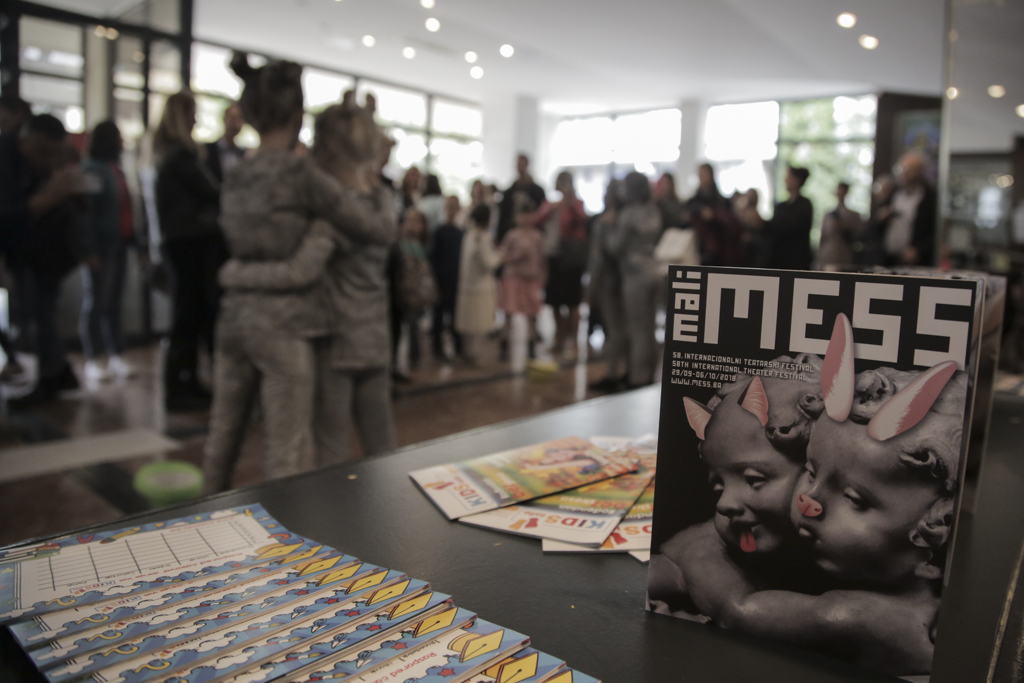
Long running Sarajevo-based festival MESS strives to educate its audience, engaging with — and problematizing — often sensitive topics. Photo courtesy of MESS.
Mustafić believes that this festival constitutes “an epochal, uncategorizable, anti-traditional phenomenon in Bosnia and Herzegovinian cultural manifestations.” He explains that the tradition of MESS opens and problematizes some of the most sensitive issues in the public arena that are produced.
Done in the right way, festivals can be used to change the current situation, Mustafić argues, by using their prominence to advocate for creating a key strategic document in the field of cultural politics, initiating debates around cultural issues and pressuring politicians into recognizing the demands of cultural workers.
“We must always advocate for new and open cultural spaces,” Mustafić emphasizes, adding that artists, as well as societies, should advocate for “the establishment of extraordinary contacts, encourage the development of the domestic scene and contribute to its complete affirmation in the broader context.”K
Feature image: K2.0.

Back to monograph








